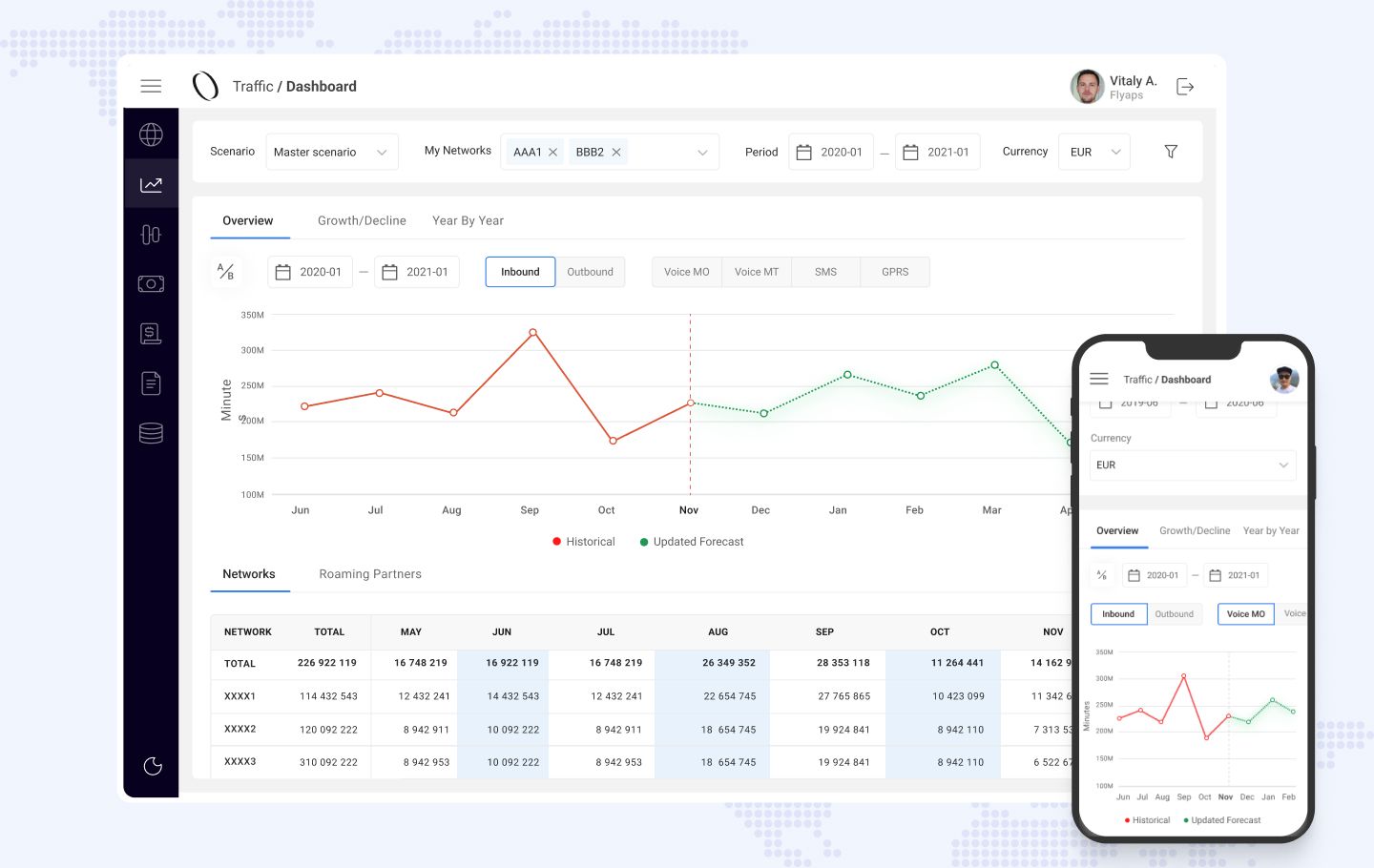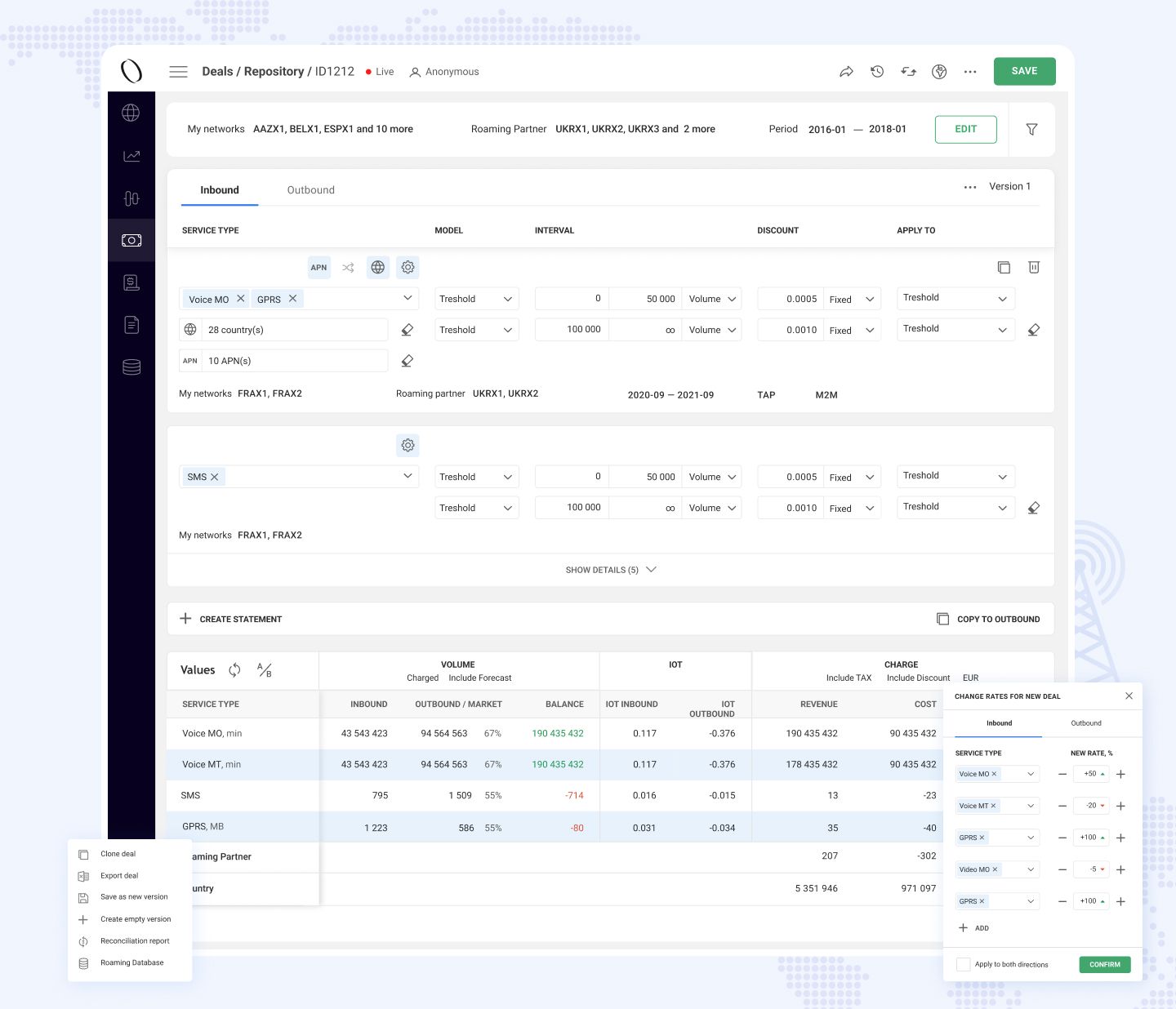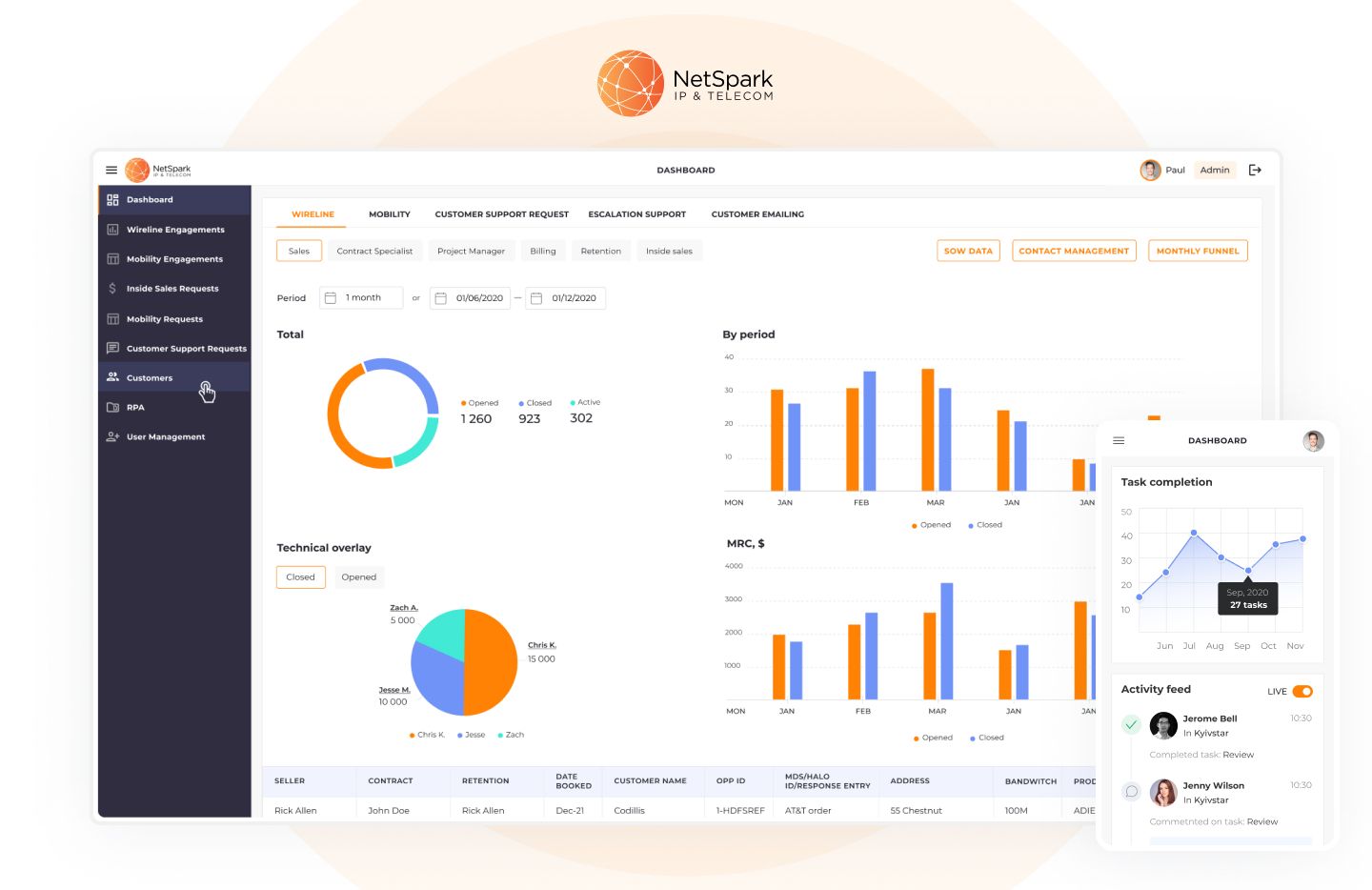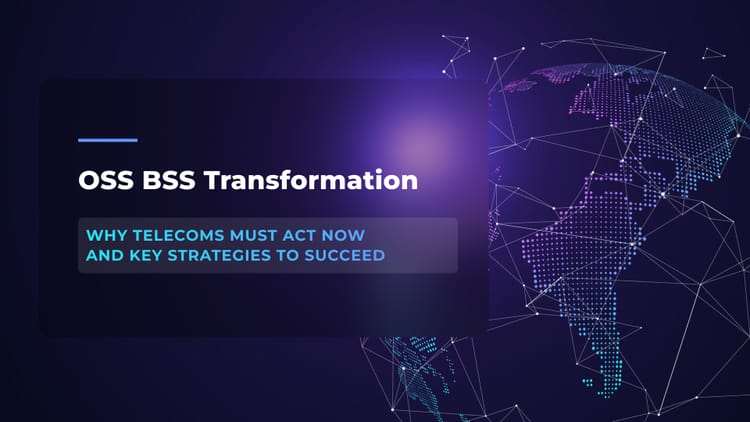The Biggest Challenges in the Telecom Industry and How to Solve Them in 2023

Customer dissatisfaction, inflexibility, and slow adoption of new technologies are common issues plaguing telecom companies worldwide. But here's the secret: the most successful telcos are the ones that quickly adapt their internal processes and embrace new tech solutions to overcome those pain points.
As a software development company, Flyaps have been in the telecom game for more than 10 years. We've seen countless telecom companies facing similar challenges and helped them build effective solutions like CRM/ERP systems, prediction analytics apps, and automation tools to stay ahead of the curve.
In this article, we're going to dive into the biggest challenges faced by telecom companies and the smart ways to solve them. We'll share real-life examples from our own cases to demonstrate how timely digital transformation decisions can become a game-changer, saving telecom operators from potential downfall. Let's jump right in!

From our standpoint, we can single out five main challenges small and even leading telecom companies face today. As we mentioned, embracing digital transformation is the safest bet to overcome these challenges, but only when paired with a well-thought-out strategy. None of the solutions we discuss further will do the trick if you adopt them for the sake of adopting. Be reasonable and choose the technologies wisely, as they should help you improve operational efficiency and outpace your competitors, not the opposite.
With that said, let's have a closer look at the main challenges telecom companies face these days, starting with complex data analytics.
Complex data analytics
Telecom companies deal with a massive amount of customer data. They gather information on how customers use their services, their interactions with the company, and the details of their billing. However, the real challenge lies in sifting through this vast data ocean to extract valuable insights and make accurate predictions.
Data analysts work tirelessly, spending hours upon hours going through countless spreadsheets, crunching numbers, and using complex algorithms to make sense of the data. Their goal is to uncover patterns, identify trends, and discover hidden opportunities that can propel their companies forward. But despite their efforts, there can still be inaccuracies in the results.
At Flyaps we often see how many ready-made analytical tools work for different industries, but do not align with the complexity of the telecommunications industry. We tackle these big data challenges in telecom by leveraging advanced technologies and approaches like microservices architecture, artificial intelligence (AI), and robotic process automation (RPA) to create custom solutions that reckon with telcos' needs. Custom systems that effectively segment and categorize customer data are a key answer to data analytic challenges in the telecom sector.
Case in point: how we developed a tool for analytics in roaming and forecasting
This case comes from our experience of working with a subsidiary of Yaana Technologies, a company specializing in BI solutions for mobile operators. The solution we worked on played a crucial role in roaming analytics, discount agreement management, negotiating with roaming partners, and forecasting. However, the multi-faceted limitations of this system, especially regarding big data analysis issues, had become a bottleneck.
Flyaps rose to the challenge by designing and implementing a web-based cloud application specifically tailored for our client. The main goal was to move the app to the cloud, update current features, and add new ones to meet the changing needs of clients in the mobile telecommunications industry. As a result, our team was able not only to achieve the primary objective but also to solve three main big data analytics challenges for the client:
Managing complex data sets
Telecom processes involve intricate data sets, making user-friendly handling and analysis a challenge. Our team introduced modular dashboards (Deals, Traffic, Budget, Finance, Reports) with distinct metrics, enhancing user experience by allowing focused analysis.
From cloud migration to telecom-specific AI solutions, we have delivered over 20 projects that are used by hundreds of MNOs and telecom companies worldwide. Check our capabilities and let’s discuss your next solution.
See our services
Scalability for future data
Scalable dashboards are also needed for anticipating data growth and evolving requirements. Flyaps designed them, accommodating new parameters seamlessly to ensure adaptability over time.
Forecasting model complexity
Flyaps adopted essential telecommunications industry models (Manual Volume, Manual Percentage, Rolling, Year-to-Date, Ratio), building algorithms for precise forecasting and addressing potential issues. As a result, the system now not only performs calculations but also predicts traffic usage, and avoids pitfalls like division by zero.

The result was a highly performative and unique system that caught the attention of industry giants such as Orange Group and Hutchison 3G UK Ltd.
Lack of flexibility in system integration
Picture a telecom company that relies on various systems to keep their operations running smoothly, from customer management to inventory control. They faced one of the common problems of telecommunication when they tried to integrate these systems with one another for better efficiency. They're stuck using complicated coding and point-to-point integration methods. It's like trying to fit a square peg into a round hole. This rigid approach becomes a headache when they need to collaborate with external vendors, suppliers, or warehouses. The whole process becomes inefficient and filled with difficulties.
Working closely with telcos, we at Flyaps often see such pictures and know that with an agile approach, telecom companies can overcome integration problems. Traditional integration involves using the so-called enterprise service bus (ESB), which acts as a hub for applications to share resources. However, this approach has its limitations. The applications still operate separately, and the system isn't easily scalable. It's more suited for legacy applications that follow a rigid structure.
Nowadays, cloud providers offer modern cloud-based applications that work differently. They allow you to break down their functionalities into smaller services that can be accessed independently. These smaller services are called microservices and are considered one of the latest telecom industry trends. But to make this work smoothly, we need a flexible way for these microservices to communicate with each other. This is where agile integration comes in.
Agile integration takes a different approach. It decentralizes communication between the microservices. This means we can easily add or remove services without disrupting the rest of the software.
Complex business models and billing procedures
Telcos face one of the biggest challenges in the telecommunications industry when it comes to the complexity of their business models and billing procedures in the M2M (Machine-to-Machine) and IoT (Internet of Things) fields. M2M refers to devices communicating with each other without human intervention. IoT is about connecting devices to the Internet. As these markets keep growing, all participants need to figure out how they can make money from their specific domain.
One particular challenge the telecom companies face is marketplace billing, which means making sure that the right providers get paid the correct amount for the exact amount of usage. This is tricky because M2M/IoT involves a lot of automation and complexity. To handle this, telcos need a robust and flexible system for keeping track of accounts receivable and managing billing. This system should be able to adapt easily as the number of connections and devices increases.
Low-quality digital customer experience
If it takes more than a day to get something done, customer satisfaction for telcos drops by a massive 30%. On average, smartphone users need around 4.1 days to fulfill their requests to their telecom providers. This data shows that front-office operations in the industry are generally slow, which is a major problem in telecommunications. However, the sooner a telco starts prioritizing user satisfaction and adopts certain approaches and technologies to enhance it, the greater the competitive advantage it will have.
Here are some ways to improve client loyalty:
- Implement self-service options for both B2B and B2C customers, especially on mobile devices.
- Utilize AI-driven chatbots.
- Use analytical tools to understand customer behavior.
To delve deeper into the digital customer experience in the telecom, read our article.
Poor efficiency and high operational costs of maintaining telecom networks
Imagine a telecom company that has been operating for many years using outdated analog back-office procedures and technologies. This approach is slow, costly, and prone to errors.
When customers request changes to their service plans or report billing discrepancies, the company employees have to manually input data into different systems. This tedious and error-prone process often leads to mistakes, such as incorrect billing or service disruptions, causing frustration for customers.
By adopting automated systems, cloud-based storage, and digital workflows, they can eliminate the reliance on analog transactions. This would streamline processes, reduce errors, and enhance the overall efficiency of the company. Additionally, such measures will help to eliminate another risk in the telecom industry, which we’ve already discussed – low customer satisfaction.
Implementing a digital back-office system would enable the company to digitize customer records, automate data entry, and integrate different systems for seamless information flow. This would result in faster response times, accurate billing, and improved customer service.
One of the telecom companies that had to overcome similar challenges in the telecom industry is NetSpark IP & Telecom. Read further to find out how we dealt with them.
Case in point: back-office tasks automation for telecom enterprise
NetSpark IP & Telecom is a US-based telecom consulting company. Before they approached us, they didn't have any tools to automate their workflow or oversee projects in place. This meant that their employees had to do all the tasks manually. It was particularly challenging and time-consuming when they had to calculate the best tariff plans for each client. They needed up to 10 employees working on a single project just for this task.
As their telecom business began to scale, NetSpark IP & Telecom decided it was time to embrace emerging technologies to automate their back-office tasks and enhance the team's overall operational efficiency. They came to Flyaps among other technology companies to help them build an automation solution – a custom CRM/ERP system.

Our developers built a CRM/ERP system that completely aligned with the company's needs and the specific processes in the telecom industry. Additionally, we created an RPA-based calculation tool that performs calculations, analyzes client data, and suggests the best combinations of tariff plans for each client.
This digital transformation of their core business processes helped NetSpark improve efficiency and increase revenue in the long term.
Why businesses choose Flyaps to overcome telecom industry challenges
Telcos choose our software development company to mitigate the threats to the telecom industry and improve their key performance indicators through custom solutions development. Here's why our services are so compelling:
We know the telecommunications market
We have a track record of developing products that are actively adopted by more than 100 telecom businesses, including major corporations such as Orange Group. With more than 10 years of experience working with telecom employers, we have acquired a deep understanding of the specific challenges and requirements for data services within the telecom industry.
We use advanced technologies for fast and flexible development
Flyaps employs cutting-edge technologies like the microservices approach, frameworks, and tools to ensure speedy and adaptable development. This enables us to create solutions that can handle the large volumes of data generated by your telco and provide real-time analytics and insights.
We prioritize communication with end-users
Flyaps recognizes that effective communication with the end-users is crucial for success. We engage with telecom businesses and present prototypes of their products in the early stages of development. By involving end-users while carefully adhering to regulatory compliance, we gather valuable feedback and ensure that the final solution meets the specific needs and expectations of the telecom business, be it cloud computing, AI integration, or custom solution development.
Ready to overcome the challenges in the telecom industry and start your digital transformation journey? Discover how Flyaps can help you tackle these obstacles and drive your business forward. Reach out to us today and unlock the solutions you need for success.
From cloud migration to telecom-specific AI solutions, we’ve helped major players like Rakuten and Orange make their telecom operations smarter. Check our capabilities and let’s discuss your next solution.
Let’s collaborate





